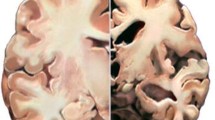Abstract
Dementia caused by Alzheimer’s disease (AD) is worldwide one of the main medical and social challenges for the next years and decades. An automated analysis of changes in the electroencephalogram (EEG) of patients with AD may contribute to improving the quality of medical diagnoses. In this paper, measures based on uni- and multi-variate spectral densities are studied in order to measure slowing and, in greater detail, reduced synchrony in the EEG signals. Hereby, an EEG segment is interpreted as sample of a (weakly) stationary stochastic process. The spectral density was computed using an indirect estimator. Slowing was considered by calculating the spectral power in predefined frequency bands. As measures for synchrony between single EEG signals, we analyzed coherences, partial coherences, bivariate and conditional Granger causality; for measuring synchrony between groups of EEG signals, we considered coherences, partial coherences, bivariate and conditional Granger causality between the respective first principal components of each group, and dynamic canonic correlations. As measure for local synchrony within a group, the amount of variance explained by the respective first principal component of static and dynamic principal component analysis was investigated. These measures were exemplarily computed for resting state EEG recordings from 83 subjects diagnosed with probable AD. Here, the severity of AD is quantified by the Mini Mental State Examination score.











Similar content being viewed by others
References
Akaike H (1974) A new look at the statistical model identification. IEEE Trans Autom Control 6(19):716–723
Brillinger DR (1981) Time series: data analysis and theory. Holden-Day, San Francisco
Dahlhaus R, Eichler M, Sandkühler J (1997) Identification of synaptic connections in neural ensembles by graphical models. J Neurosci Methods 77:93–107
Dauwels J, Vialatte F, Cichocki A (2010) Diagnosis of Alzheimer’s disease from EEG Signals: where are we standing? Curr Alzheimer Res 6(7):487–505
Flamm C, Kalliauer U, Deistler M, Waser M (2012) System identification, environmental modelling, and control system design, graphs for dependence and causality in multivariate time series. Springer, London, pp 133–151
Folstein MF, Folstein SE, McHugh PR (1975) ‘Mini-mental state’. A practical method for grading the cognitive state of patients for the clinician. J Psychiatric Res 3(12):189–198
Jasper HH (1958) The ten-twenty electrode system of the International Federation. Electroencephalogr Clin Neurophysiol 2(10):371–375
Jeong J (2004) EEG dynamics in patients with Alzheimer’s disease. Clin Neurophysiol 4(115):1490–1505
Knopman DS, Boeve BF, Petersen RC (2003) Essentials of the proper diagnoses of mild cognitive impairment, dementia, and major subtypes of dementia. Mayo Clin Proc 10(78):1290–1308
Liu Y et al (2008) Regional homogeneity, functional connectivity and imaging markers of Alzheimer’s disease: a review of resting-state fMRI studies. Neuropsychologica 46:1648–1656
McKhann G, Drachman D, Folstein M, Katzman R, Price D (1984) Stadlan E. Clinical diagnosis of Alzheimer’s disease: report of the NINCDS-ADRDA work group under the auspices of Department of Health and Human Services Task Force on Alzheimer’s Disease. Neurology 7(34):939–944
Moreira PI, Zhu X, Smith MA, Perry G (2009) Alzheimer’s disease: an overview. Encyclopedia of neuroscience. Academic Press, In, pp 259–263
Pupi A, De Cristofaro M, Nacmias B, Sorbi S, Mosconi L (2009) Brain glucose metabolism: age, Alzheimer’s disease and APoE allele effects. Encyclopedia of neuroscience. Academic Press, In, pp 363–373
Schmidt R, Marksteiner J, Dal Bianco P, Ransmayr G, Bancher C, Benke T, Wancata J, Fischer P, Leblhuber CF (2010) Konsensusstatement “Demenz 2010”der Österreichischen Alzheimer Gesellschaft. Neuropsychiatrie 24(2):67–87
Sakoglu Ü et al (2011) Paradigm shift in translational neuroimaging of CNS disorders. Biochem Pharmacol 81:1374–1387
Thompson PM, Toga AW (2009) Alzheimer’s disease: MRI studies. Encyclopedia of neuroscience. Academic Press, In, pp 269–273
Waser M, Garn H (2013) Removing cardiac interference from the electroencephalogram using a modified Pan-Tompkins algorithm and linear regression. Accepted for publication at 35th annual international IEEE EMBS conference.
Acknowledgments
Part of this work has been supported by the project Advanced EEG in der Vorhersage des Verlaufs der Alzheimerdemenz, Austrian Research Promotion Agency (FFG), Project ID 827462. The EEG data has been provided by the Medical University of Graz, the Medical University of Innsbruck, the Medical University of Vienna, and the General Hospital Linz.
Author information
Authors and Affiliations
Corresponding author
Rights and permissions
About this article
Cite this article
Waser, M., Deistler, M., Garn, H. et al. EEG in the diagnostics of Alzheimer’s disease. Stat Papers 54, 1095–1107 (2013). https://doi.org/10.1007/s00362-013-0538-6
Received:
Revised:
Published:
Issue Date:
DOI: https://doi.org/10.1007/s00362-013-0538-6




